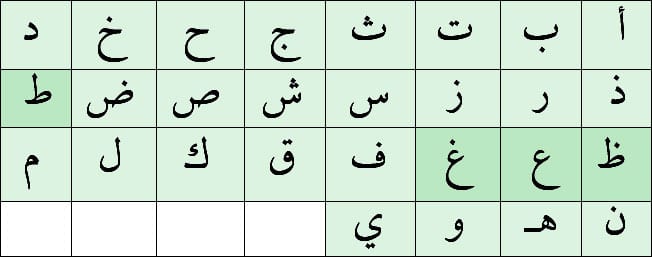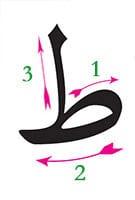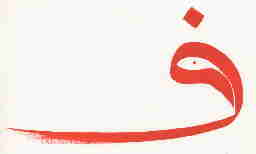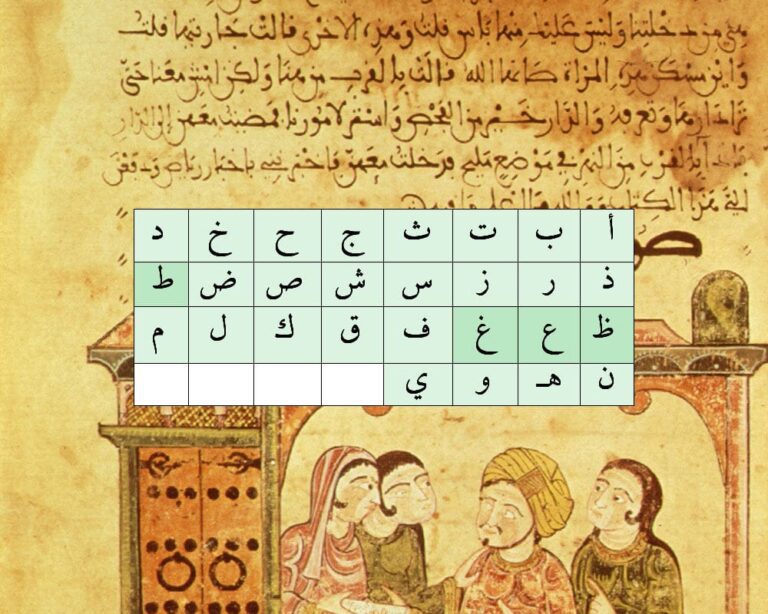Yes, it’s the penultimate lesson, because I’m adding an unexpected one on vowels, but don’t worry, it’s very simple.
Today we’re tackling the last series of letters, which will finally enable us to read all the Arabic words, even if we don’t really know how to pronounce them yet!
I have to admit that, now that I’m able to read, I’m doing what little children do, I’m deciphering everything I can in the street, and it’s working! It’s funny, this feeling of falling back into childhood (I’d learnt to read before I even went to school), and I also have the impression that the world is opening up. Being able to decipher street names, for example, or road signs, is great. Even if in Morocco it’s not always very useful, because the vast majority of them are also written in Latin characters..

Right, here we go! Today’s letters are rather difficult to pronounce and I advise you to listen carefully to the video and the little sound files included, and to practise often. At first we all look ridiculous, because these are sounds that don’t exist in our language, but if you try hard enough you’ll almost get the hang of it.
The first two letters are emphatic. They are therefore pronounced from the back of the throat, with a strong accent..
The ط : tâ

It has the same ovoid shape as the Sad ص , but with a bar on top. Two important things: the bar must be placed on the curve of the letter, not on the line, and it is drawn from the bottom up. Take a good look at how Maha does it in the video. It’s easier, in fact, to avoid ‘drooling’ and getting into the rounded part of the letter. And if one day you want to do Arabic calligraphy, this is the right way to make the pretty stop in an almost square shape.
Apart from that, it’s a very easy letter, it doesn’t change shape, it’s always the same whether it’s isolated, at the beginning or at the end of a word. And in the middle, the only thing that changes, of course, is the ligature with the previous letter.
The ظ : zâ
This one is the unpronounceable letter, Arabic is said to be the language of ظ , because this sound only exists in this language. So for the time being, we’re learning how to write it (it’s a ط with a dot on top) and practising, but it’s going to take us a very long time to get the hang of it! The dot is placed on the left of the vertical bar.
The last two letters are also pronounced from the back of the throat, and are truly characteristic of Arabic.
The ع : Ayn
The Ayn is a fat ‘A’ from the back of the throat, vaguely tending towards the ‘e’. It’s used a lot in Arabic, where only short a’s are open like in English(we’ll look at this in the lesson on vowels). On its own, it has the shape of an inverted 3, with a much smaller top loop. And it’s the letter that starts the word ‘Arabic’.
It changes shape when it’s in a word, and there’s even a version for each position. In fact, the upside-down 3 is only seen in an isolated position.

In the initial position of a word, all that remains is the small loop of the Ayn. Instead of going back down to form the big loop, we start on the right to make the ligature with the next letter.
In the middle, the letter looks like an inverted triangle. It’s better to round off this triangle, inwards for the right-hand side and outwards for the left-hand side, as is exaggerated in this calligraphy by Hassan Massoudy:

Or, more commonly, in these lines of writing (source Wikimedia Commons):

In the final version, the big curve of the 3 reappears to mark the end of the word.
In some cases, such as when it is close to ا , the ع is placed ‘on’ the letter. It then becomes Hamza أ . In the same way, the ع is often silent: in this case, too, we speak of ‘Hamza’, and simply give it a little glottis.
No panic… we’ll come back to this later.
The غ : Ghayn
Taddaaaaaaaaaaa طدا (no, that’s not a real Arabic word) This is your last letter in the alphabet, Ghayn. It’s written in exactly the same way as Ayn, but with a dot on top. The sound is a bit like a G turned into an unrolled R, Indian “r” style.
Some words
العربية: the Arabic (language)
It’s the word with the article ال at the beginning, which is attached to ع : a good way of looking at the connection. (Oui, the article is attached to the word in Arabic).
عين : the eye
The eye , has the same name as the letter. It is a very important word in Arabic, think of the evil eye, which is protected with the خمسة , the “Khamsa”, or ‘Hand of Fatima’. (The name comes from the number five, for the five fingers of the hand).
غرب : West
The other cardinal points :
- East : شرق (cherk)
- North : شمال (chamal)
- South : جنوب (djanoub)
Yes, the Maghreb, ‘Al Maghrib’, المغرب , is the west, the part of the world where the sun sets. And the name of one of the five prayers.
Here’s a little trick to help you learn vocabulary easily. When you add “ma” before a word, it usually means ‘the place where’.
مكتب : the office
In application, the desk is the place where you write. And the verb to write is كتب (in relation to كتاب , the Book and كاتتب , the writer (katib) ).
طالب : the student
Talib, or طالبة the student, , with its ة (ta marbouta) which marks the feminine.
طبيب : the doctor
Tabib, qui a donné “Toubib”, directement en français. Vous commencez à voir une série, avec tous ces noms de personnes qui font une action, et qui se terminent en “ib” ?
ظلم : injustice
There again, to loosen your tongue and throat. And justice, which is easier, to cheer you up. :عدالة (adal)
غزال: elegant, beautiful
we’re back to something easier, with غزال , which gave us the name for gazelle. In fact, it’s also its name in Arabic, so elegant do people find this animal. And the nickname we throw at girls, when we hit on them, here in Morocco. It’s funny that people use a French word that comes from Arabic, non.
 A typo or syntax error? You can select the text and hit Ctrl+Enter to send us a message. Thank you! If this post interested you, maybe you can also leave a comment. We'd love to exchange with you !
A typo or syntax error? You can select the text and hit Ctrl+Enter to send us a message. Thank you! If this post interested you, maybe you can also leave a comment. We'd love to exchange with you !




